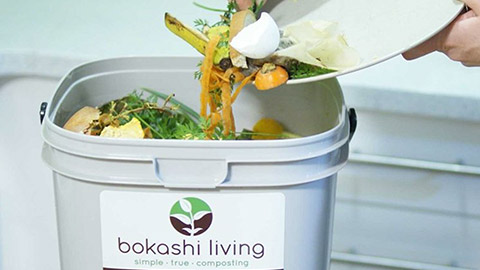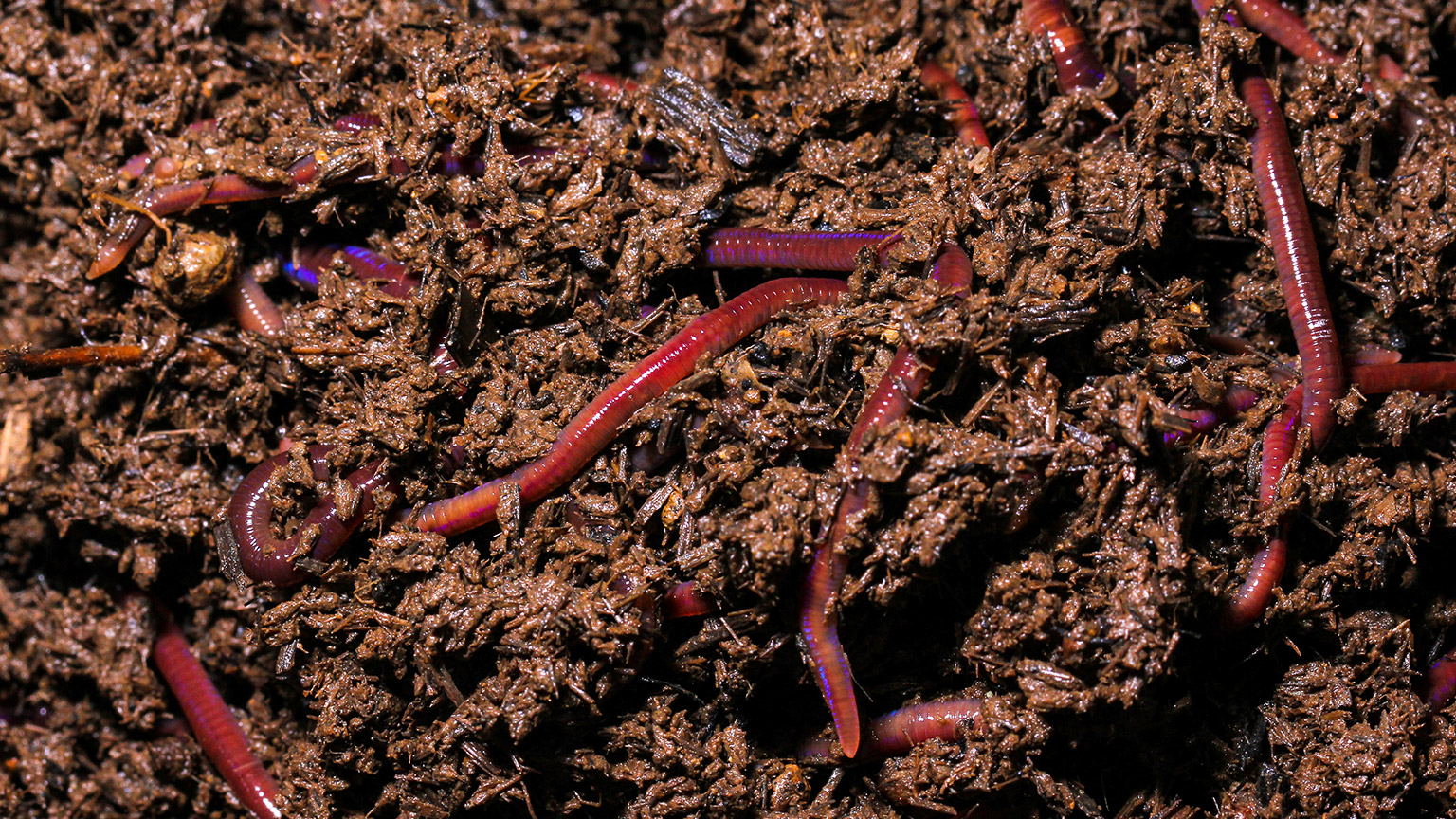Composting is the most common method of breaking down organic matter in Aotearoa, but other approaches are becoming more popular. In this topic we look at two additional methods. For gardeners and horticulturalists, these will probably complement rather than replace the compost heap.
Worm farms, also called vermicomposting systems use specific types of worms, called compost worms, to eat the raw materials (mostly food scraps) and excrete (poop) a substance called worm castings or vermicast. Vermicast (shown in the image above) looks like a well-structured soil and is high in nutrients.
How worm farms work
Most commercially available worm farms come as a self-contained system. You add the material to the top, and the worms eat it and create vermicast. As they continue to eat, you can continue to add your material.
Over time the bin fills up with vermicast. The following two products manage the collection of vermicast differently.
- Tumbleweed Worm Cafe: You add another tray on top, which the worms then move up into and then you empty the bottom most tray. Watch this video to see it in action.
Hungry Bin the weight of the vermicast makes it fall out when you open the bottom hatch. These bins are made right here in Aotearoa.
Once you’ve harvested the vermicast, mix it into the soil, rather than planting directly into it.
There is an in-ground alternative system, called Subpod. In this system, worms move from the surrounding soil into the worm farm and out again as required. In doing so, they excrete some of the vermicast directly into the soil. It's designed to be a garden seat too.
Advantages and disadvantages of worm farms
Advantages
- When making compost it's best not to add large amounts of cooked or processed food products, like meat, seafood, bread or dairy products, but in a worm farm, you can.
- Worm farms can be set up inside, so are a good alternative for people living in inner-city apartments, who don’t have the space to make compost heaps.
Add worm castings to compost that is becoming anaerobic
-
Worm castings are well-suited to help fix problems with compost piles, as they are a good source of beneficial microorganisms that can help to restore the balance of bacteria and fungi in the pile.
- Worm castings can help improve soil structure and water-holding capacity, which can further aid in composting.
Disadvantages
- Worms can be a bit fussy. They can’t go for a long time without food, so require regular feeding.
- If you’re planning on going away for a while make sure someone can keep feeding your worm farm while you’re away.
- Worms also don’t cope well with overfeeding. If you overfeed a worm farm the material will start to rot before the worms can eat it, and it will give off a bad smell.
- Once it is rotting they won’t eat it, so you’re best to remove all rotting material, dispose of it, and add a small amount of fresh material to the worm farm.

Bokashai is a Japanese approach to dealing with organic matter which uses microbes to ferment the organic material in an airtight container. Bokashi bins come in a variety of sizes. They are becoming popular on tertiary education campuses and in downtown offices because they are easy to use and don’t smell.
How bokashi bins work
Consumer.org describes it this way:
Food scraps, cooked foods, fresh lawn clippings and wilted flowers go into an airtight bucket, alongside a layer of powder or spray, which contains microbes that ferment the waste. Once the bucket is full, it’s left for two weeks (longer in cold weather), so you may require two sets. After that, the solids can be added to your regular compost pile or dug into the garden. Liquids can be poured down the sink or diluted and used as plant fertiliser.Consumer.org.nz
Advantages and disadvantages of bokashi bins
Advantages
- You can put bread, cheese, meat and seafood in the bins.
- Because it is airtight, it doesn’t give off any smell.
Disadvantages
- You can’t put paper and cardboard in the bins.
- Bigger bins can be difficult to handle and empty.
- You’ll need two bins, as you need to leave the bin for several weeks once it’s full, to let the contents completely break down.
This video provides a good overview of how agribusiness can use Bokashi on a large scale and keep landfills free of local food scraps.
In the video, they refer to EM. This stands for effective microorganisms (EM), which is the name given to the special culture (type) of naturally occurring microorganisms that are added to the raw material to encourage fermentation.
Activity – Good options for keeping food waste out of landfill
Read the article, Composting and worm farming, on Consumer NZ. They tested five different at-home food waste methods and provide their opinion about the pros and cons of each.
